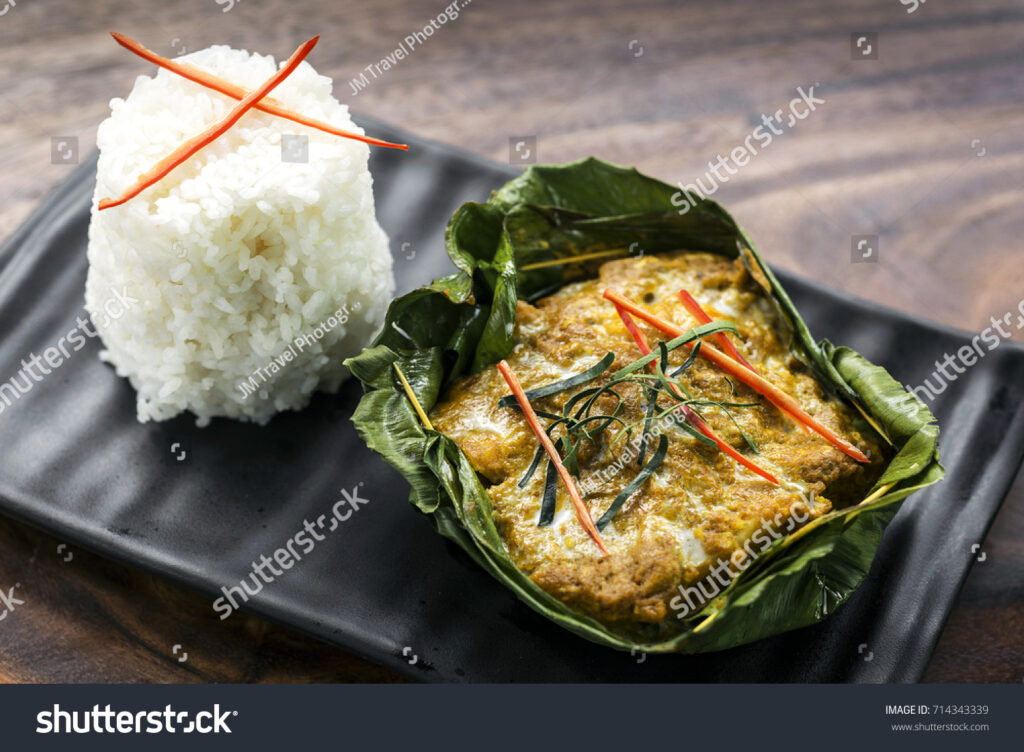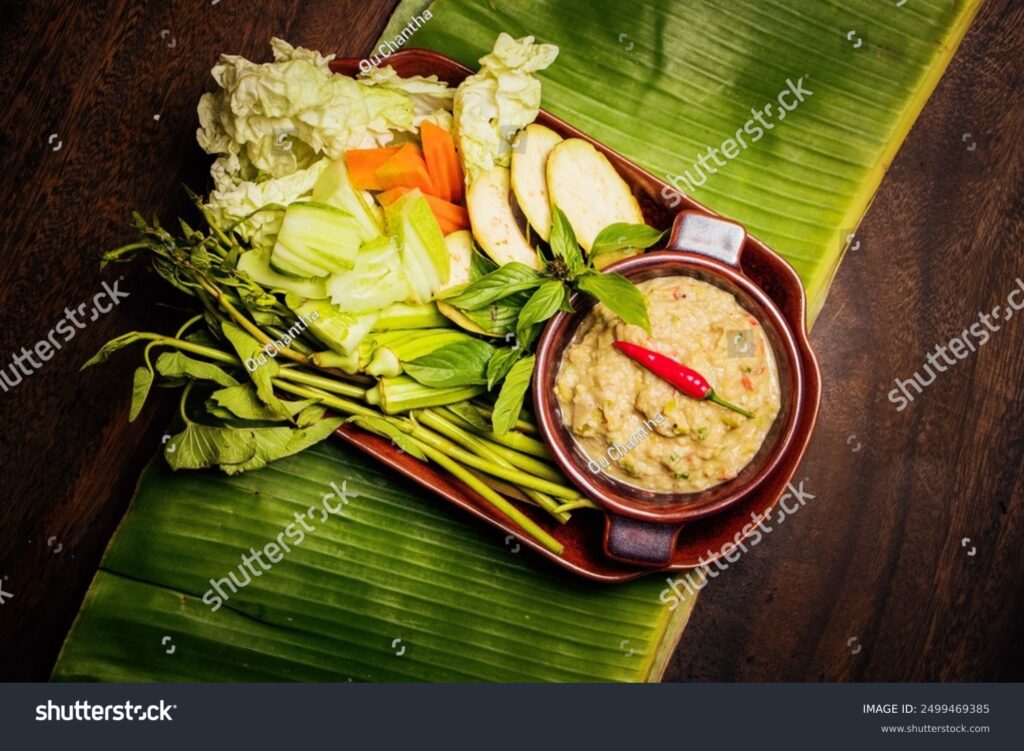A guide to Cambodian cuisine
A guide to Cambodian cuisine
The scent of lemongrass, kaffir lime, and fresh turmeric drifts through the warm air of Phnom Penh’s central market, spreading an enticing aroma over the steady hum of vendors and customers. Here, amid stalls brimming with live river fish, tropical fruits stacked in vibrant hues, and baskets of dried spices, Cambodia’s culinary essence reveals itself. The country’s cuisine, often overshadowed by its more globally renowned neighbors, is a sensory voyage of delicate flavors, nuanced spice, and a reverence for tradition. It is a reflection of its people—resilient, resourceful, and deeply connected to the land and water that sustain them.
Nowhere is this connection more apparent than in the nation’s signature dish: fish amok curry. This steamed coconut curry, wrapped in banana leaves, is a good example of balance, where the sweetness of coconut milk tempers the gentle heat of chilies, and the umami depth of prahok, Cambodia’s beloved fermented fish paste.

The fish, typically freshwater, is marinated with kroeung—a paste of lemongrass, galangal, turmeric, and kaffir lime—before being enveloped in the rich, golden-hued curry.
Beyond the allure of amok, Cambodia’s street food culture buzzes with the energy of daily life. At dawn, the scent of grilling pork skewers mingles with the yeasty aroma of freshly steamed num pang pâté, the local take on a baguette sandwich. As the sun climbs, bustling markets and roadside vendors present a shifting display of food—golden, crispy kuy teav (noodle soup), aromatic bowls of bai sach chrouk (pork and rice), and green mango salad topped with roasted peanuts and dried shrimp.
Then there are the bold, briny flavors of Cambodia’s fermented specialties. Where Thailand has fish sauce and Vietnam has nuoc mam, Cambodia has prahok—a pungent, deeply umami fish paste. In the countryside, where refrigeration is a luxury, prahok is a lifeline, preserved in earthenware jars and used to bolster dishes with depth. Its impact is evident in fish paste dip, teuk kreung, a dish that speaks to the Cambodian philosophy of food as nourishment and communal experience. The dip, made from mashed prahok, lime, garlic, and chili, is served alongside an abundant spread of raw vegetables—crisp cucumbers, tart green mango, and slender stalks of morning glory.

Cambodian food is not simply a static relic of tradition; it is a living, evolving expression of its people. In the capital, a new generation of chefs is reinterpreting the flavors of their ancestors, blending time-honored techniques with modern innovation. At restaurants like Cuisine Wat Damnak in Siem Reap or Lum Orng in Battambang, local ingredients take center stage—wild mushrooms from the Cardamom Mountains, Tonlé Sap’s seasonal fish, heirloom rice varieties cultivated for generations.
Beyond the urban culinary scene, food is deeply tied to Cambodia’s spiritual and agrarian roots. The rhythm of the Mekong River dictates the diet, its waters yielding a bounty of freshwater fish. Rice paddies stretch to the horizon, their harvest cycles determining the pulse of the countryside. Monks walk barefoot at dawn, receiving alms in the form of rice and fruit, a tradition that underscores the connection between food and faith. To eat in Cambodia is to understand its history—not just the scars of the past but the resilience of a people who have reclaimed their heritage through the act of cooking and sharing meals.
For those looking to experience Cambodia’s culinary scene firsthand, Lost Plate offers immersive food tours that bring travelers deep into the heart of local dining culture. The Phnom Penh Food Tour is a journey through hidden neighborhoods, offering unlimited food and drinks while uncovering the depths of Cambodian cuisine. From sampling Khmer curry noodles, a humble dish dating back to the 5th century, to savoring slow-cooked stews and stir-fries at the city’s busiest roadside eatery, this tour provides an authentic taste of the capital’s food traditions.
One of the highlights is Auntie Song’s legendary pork ribs, slow-roasted and served alongside a specialty fish cake dish brought in daily from Battambang. The tour also offers a refined take on Cambodia’s most cherished dishes, including fish amok and Khmer curry, presented in a lush setting hidden from the city’s hustle. A visit to a local bar rounds out the experience, where guests can sip on locally crafted cocktails infused with seasonal ingredients.
For those venturing to Siem Reap, the Angkor Wat Temples and Food Tour blends Cambodia’s rich history with its vibrant culinary scene. The day begins with an exploration of Angkor Wat’s 12th-century temples, followed by a journey to lesser-visited ruins along dirt roads and hidden forested paths. As the sun sets, the food adventure begins—a countryside picnic among lotus fields, a visit to a stilted village for a meal with a local family, and stops at Siem Reap’s best BBQ vendors and Khmer restaurants. The evening concludes with a drink at a lively local bar before heading back to the hotel.